This is a guest post by William Kennedy, managing partner at Ardan Studios in Miami, FL, a mobile and web app development company. Bill is also the author of the blog GoingGo.Net and the organizer for the Go-Miami and Miami MongoDB meetups
This is a guest post by William Kennedy, managing partner at Ardan Studios in Miami, FL, a mobile and web app development company. Bill is also the author of the blog GoingGo.Net and the organizer for the Go-Miami and Miami MongoDB meetups in Miami. Bill looked for a new language in 2013 that would allow him to develop back end systems in Linux and found Go. He has never looked back.
If you are attending GopherCon 2014 or plan to watch the videos once they are released, this article will prepare you for the talk by Gustavo Niemeyer and Steve Francia. It provides a beginners view for using the Go mgo driver against a MongoDB database.
Introduction
MongoDB supports many different programming languages thanks to a great set of drivers. One such driver is the MongoDB Go driver which is called mgo. This driver was developed by Gustavo Niemeyer from Canonical with some assistance from MongoDB Inc. Both Gustavo and Steve Francia, the head of the drivers team, will be talking at GopherCon 2014 in April about “Painless Data Storage With MongoDB and Go”. The talk describes the mgo driver and how MongoDB and Go work well together for building highly scalable and concurrent software.
MongoDB and Go let you build scalable software on many different operating systems and architectures, without the need to install frameworks or runtime environments. Go programs are native binaries and the Go tooling is constantly improving to create binaries that run as fast as equivalent C programs. That wouldn’t mean anything if writing code in Go was complicated and as tedious as writing programs in C. This is where Go really shines because once you get up to speed, writing programs in Go is fast and fun.
In this post I am going to show you how to write a Go program using the mgo driver to connect and run queries concurrently against a MongoDB database. I will break down the sample code and explain a few things that can be a bit confusing to those new to using MongoDB and Go together.
Sample Program
The sample program connects to a public MongoDB database I have hosted with MongoLab. If you have Go and Bazaar installed on your machine, you can run the program against my database. The program is very simple - it launches ten goroutines that individually query all the records from the buoy_stations collection inside the goinggo database. The records are unmarshaled into native Go types and each goroutine logs the number of documents returned:
Now that you have seen the entire program, we can break it down. Let’s start with the type structures that are defined in the beginning:
The structures represent the data that we are going to retrieve and unmarshal from our query. BuoyStation represents the main document and BuoyCondition and BuoyLocation are embedded documents. The mgo driver makes it easy to use native types that represent the documents stored in our collections by using tags. With the tags, we can control how the mgo driver unmarshals the returned documents into our native Go structures.
Now let’s look at how we connect to a MongoDB database using mgo:
We start with creating a mgo.DialInfo object. Connecting to a replica set can be accomplished by providing multiple addresses in the Addrs field or with a single address. If we are using a single host address to connect to a replica set, the mgo driver will learn about any remaining hosts from the replica set member we connect to. In our case we are connecting to a single host.
After providing the host, we specify the database, username and password we need for authentication. One thing to note is that the database we authenticate against may not necessarily be the database our application needs to access. Some applications authenticate against the admin database and then use other databases depending on their configuration. The mgo driver supports these types of configurations very well.
Next we use the mgo.DialWithInfo method to create a mgo.Session object. Each session specifies a Strong or Monotonic mode, and other settings such as write concern and read preference. The mgo.Session object maintains a pool of connections to MongoDB. We can create multiple sessions with different modes and settings to support different aspects of our applications.
The next line of code sets the mode for the session. There are three modes that can be set, Strong, Monotonic and Eventual. Each mode sets a specific consistency for how reads and writes are performed. For more information on the differences between each mode, check out the documentation for the mgo driver.
We are using Monotonic mode which provides reads that may not entirely be up to date, but the reads will always see the history of changes moving forward. In this mode reads occur against secondary members of our replica sets until a write happens. Once a write happens, the primary member is used. The benefit is some distribution of the reading load can take place against the secondaries when possible.
With the session set and ready to go, next we execute multiple queries concurrently:
This code is classic Go concurrency in action. First we create a sync.WaitGroup object so we can keep track of all the goroutines we are going to launch as they complete their work. Then we immediately set the count of the sync.WaitGroup object to ten and use a for loop to launch ten goroutines using the RunQuery function. The keyword go is used to launch a function or method to run concurrently. The final line of code calls the Wait method on the sync.WaitGroup object which locks the main goroutine until everything is done processing.
To learn more about Go concurrency and better understand how this particular piece of code works, check out these posts on concurrency and channels.
Now let’s look at the RunQuery function and see how to properly use the mgo.Session object to acquire a connection and execute a query:
The very first thing we do inside of the RunQuery function is to defer the execution of the Done method on the sync.WaitGroup object. The defer keyword will postpone the execution of the Done method, to take place once the RunQuery function returns. This will guarantee that the sync.WaitGroup objects count will decrement even if an unhandled exception occurs.
Next we make a copy of the session we created in the main goroutine. Each goroutine needs to create a copy of the session so they each obtain their own socket without serializing their calls with the other goroutines. Again, we use the defer keyword to postpone and guarantee the execution of the Close method on the session once the RunQuery function returns. Closing the session returns the socket back to the main pool, so this is very important.
To execute a query we need a mgo.Collection object. We can get a mgo.Collection object through the mgo.Session object by specifying the name of the database and then the collection. Using the mgo.Collection object, we can perform a Find and retrieve all the documents from the collection. The All function will unmarshal the response into our slice of BuoyStation objects. A slice is a dynamic array in Go. Be aware that the All method will load all the data in memory at once. For large collections it is better to use the Iter method instead. Finally, we just log the number of BuoyStation objects that are returned.
Conclusion
The example shows how to use Go concurrency to launch multiple goroutines that can execute queries against a MongoDB database independently. Once a session is established, the mgo driver exposes all of the MongoDB functionality and handles the unmarshaling of BSON documents into Go native types.
MongoDB can handle a large number of concurrent requests when you architect your MongoDB databases and collections with concurrency in mind. Go and the mgo driver are perfectly aligned to push MongoDB to its limits and build software that can take advantage of all the computing power that is available.
The mgo driver provides a safe way to leverage Go’s concurrency support and you have the flexibility to execute queries concurrently and in parallel. It is best to take the time to learn a bit about MongoDB replica sets and load balancer configuration. Then make sure the load balancer is behaving as expected under the different types of load your application can produce.
Now is a great time to see what MongoDB and Go can do for your software applications, web services and service platforms. Both technologies are being battle tested everyday by all types of companies, solving all types of business and computing problems.
原文地址:Running MongoDB Queries Concurrently With Go, 感谢原作者分享。
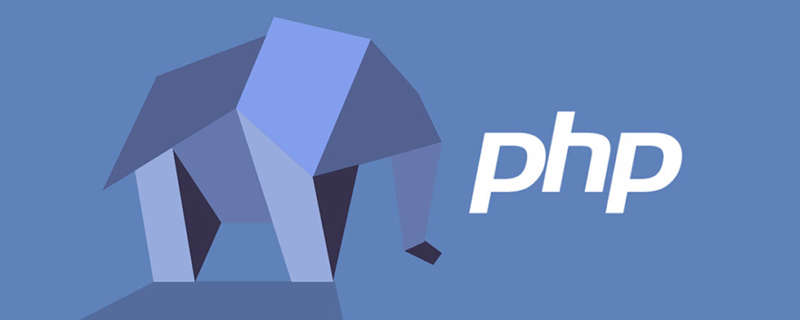 mongodb php 扩展没有怎么办Nov 06, 2022 am 09:10 AM
mongodb php 扩展没有怎么办Nov 06, 2022 am 09:10 AMmongodb php扩展没有的解决办法:1、在linux中执行“$ sudo pecl install mongo”命令来安装MongoDB的PHP扩展驱动;2、在window中,下载php mongodb驱动二进制包,然后在“php.ini”文件中配置“extension=php_mongo.dll”即可。
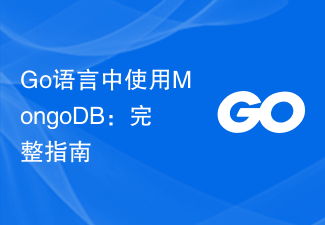 Go语言中使用MongoDB:完整指南Jun 17, 2023 pm 06:14 PM
Go语言中使用MongoDB:完整指南Jun 17, 2023 pm 06:14 PMMongoDB是一种高性能、开源、文档型的NoSQL数据库,被广泛应用于Web应用、大数据以及云计算领域。而Go语言则是一种快速、开发效率高、代码可维护性强的编程语言。本文将为您完整介绍如何在Go语言中使用MongoDB。一、安装MongoDB在使用MongoDB之前,需要先在您的系统中安装MongoDB。在Linux系统下,可以通过如下命令安装:sudo
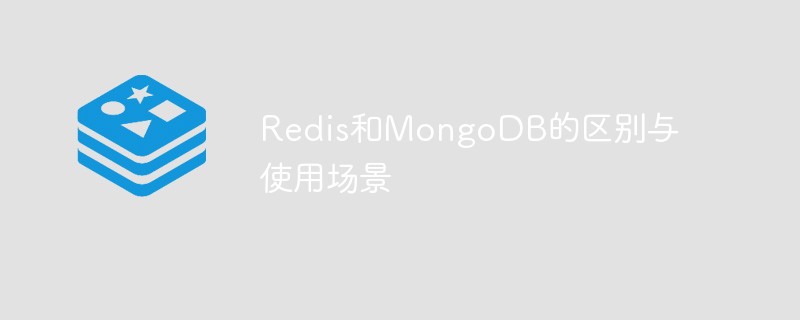 Redis和MongoDB的区别与使用场景May 11, 2023 am 08:22 AM
Redis和MongoDB的区别与使用场景May 11, 2023 am 08:22 AMRedis和MongoDB都是流行的开源NoSQL数据库,但它们的设计理念和使用场景有所不同。本文将重点介绍Redis和MongoDB的区别和使用场景。Redis和MongoDB简介Redis是一个高性能的数据存储系统,常被用作缓存和消息中间件。Redis以内存为主要存储介质,但它也支持将数据持久化到磁盘上。Redis是一款键值数据库,它支持多种数据结构(例
 php7.0怎么安装mongo扩展Nov 21, 2022 am 10:25 AM
php7.0怎么安装mongo扩展Nov 21, 2022 am 10:25 AMphp7.0安装mongo扩展的方法:1、创建mongodb用户组和用户;2、下载mongodb源码包,并将源码包放到“/usr/local/src/”目录下;3、进入“src/”目录;4、解压源码包;5、创建mongodb文件目录;6、将文件复制到“mongodb/”目录;7、创建mongodb配置文件并修改配置即可。
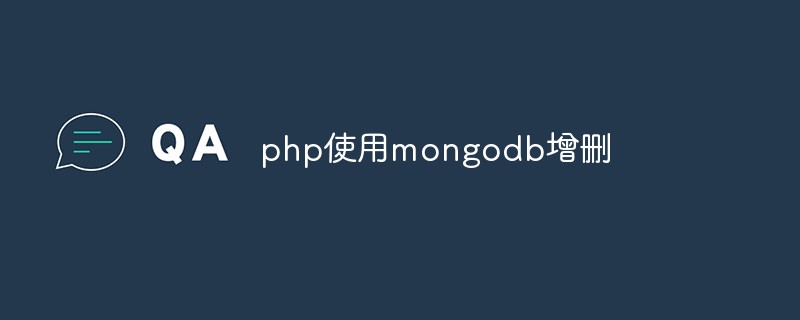 php怎么使用mongodb进行增删查改操作Mar 28, 2023 pm 03:00 PM
php怎么使用mongodb进行增删查改操作Mar 28, 2023 pm 03:00 PMMongoDB作为一款流行的NoSQL数据库,已经被广泛应用于各种大型Web应用和企业级应用中。而PHP语言也作为一种流行的Web编程语言,与MongoDB的结合也变得越来越重要。在本文中,我们将会学习如何使用PHP语言操作MongoDB数据库进行增删查改的操作。
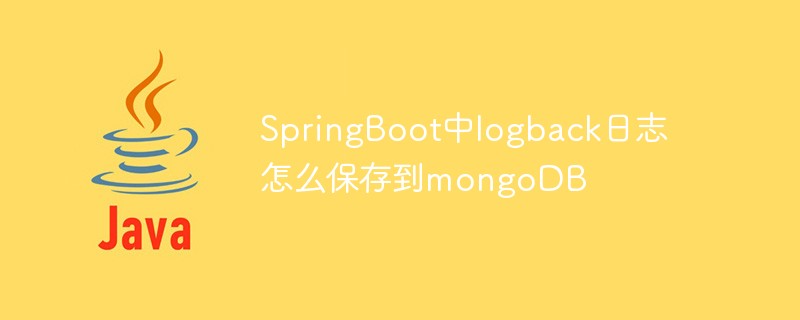 SpringBoot中logback日志怎么保存到mongoDBMay 18, 2023 pm 07:01 PM
SpringBoot中logback日志怎么保存到mongoDBMay 18, 2023 pm 07:01 PM自定义Appender非常简单,继承一下AppenderBase类即可。可以看到有个AppenderBase,有个UnsynchronizedAppenderBase,还有个AsyncAppenderBase继承了UnsynchronizedAppenderBase。从名字就能看出来区别,异步的、普通的、不加锁的。我们定义一个MongoDBAppender继承UnsynchronizedAppenderBasepublicclassMongoDBAppenderextendsUnsynchron
 SpringBoot怎么整合Mongodb实现增删查改May 13, 2023 pm 02:07 PM
SpringBoot怎么整合Mongodb实现增删查改May 13, 2023 pm 02:07 PM一、什么是MongoDBMongoDB与我们之前熟知的关系型数据库(MySQL、Oracle)不同,MongoDB是一个文档数据库,它具有所需的可伸缩性和灵活性,以及所需的查询和索引。MongoDB将数据存储在灵活的、类似JSON的文档中,这意味着文档的字段可能因文档而异,数据结构也会随着时间的推移而改变。文档模型映射到应用程序代码中的对象,使数据易于处理。MongoDB是一个以分布式数据库为核心的数据库,因此高可用性、横向扩展和地理分布是内置的,并且易于使用。况且,MongoDB是免费的,开源
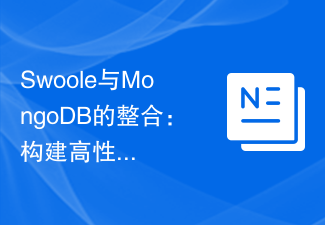 Swoole与MongoDB的整合:构建高性能的文档数据库系统Jun 14, 2023 am 11:51 AM
Swoole与MongoDB的整合:构建高性能的文档数据库系统Jun 14, 2023 am 11:51 AM在现代企业应用程序开发中,需要处理海量数据和高并发的访问请求。为了满足这些需求,开发人员需要使用高性能的数据库系统,以确保系统的稳定性和可扩展性。本文将介绍如何使用Swoole和MongoDB构建高性能的文档数据库系统。Swoole是一个基于PHP语言开发的异步网络通信框架,它能够大大提高PHP应用程序的性能和并发能力。MongoDB是一种流行的文档数据库,


ホットAIツール

Undresser.AI Undress
リアルなヌード写真を作成する AI 搭載アプリ

AI Clothes Remover
写真から衣服を削除するオンライン AI ツール。

Undress AI Tool
脱衣画像を無料で

Clothoff.io
AI衣類リムーバー

AI Hentai Generator
AIヘンタイを無料で生成します。

人気の記事

ホットツール

Safe Exam Browser
Safe Exam Browser は、オンライン試験を安全に受験するための安全なブラウザ環境です。このソフトウェアは、あらゆるコンピュータを安全なワークステーションに変えます。あらゆるユーティリティへのアクセスを制御し、学生が無許可のリソースを使用するのを防ぎます。

DVWA
Damn Vulnerable Web App (DVWA) は、非常に脆弱な PHP/MySQL Web アプリケーションです。その主な目的は、セキュリティ専門家が法的環境でスキルとツールをテストするのに役立ち、Web 開発者が Web アプリケーションを保護するプロセスをより深く理解できるようにし、教師/生徒が教室環境で Web アプリケーションを教え/学習できるようにすることです。安全。 DVWA の目標は、シンプルでわかりやすいインターフェイスを通じて、さまざまな難易度で最も一般的な Web 脆弱性のいくつかを実践することです。このソフトウェアは、

SublimeText3 英語版
推奨: Win バージョン、コードプロンプトをサポート!

EditPlus 中国語クラック版
サイズが小さく、構文の強調表示、コード プロンプト機能はサポートされていません

SublimeText3 Linux 新バージョン
SublimeText3 Linux 最新バージョン







